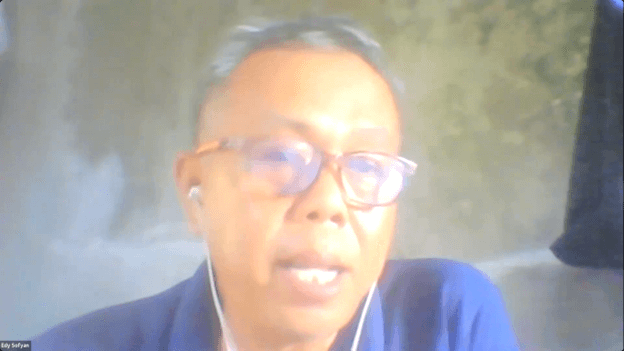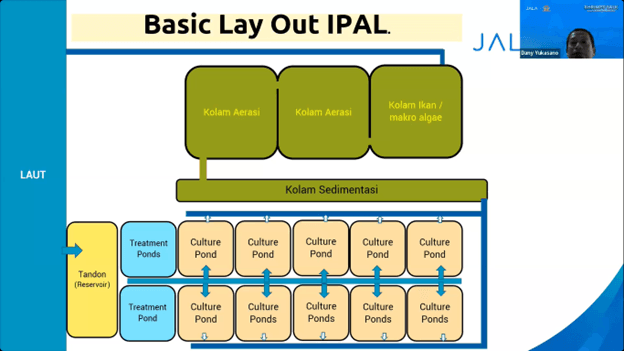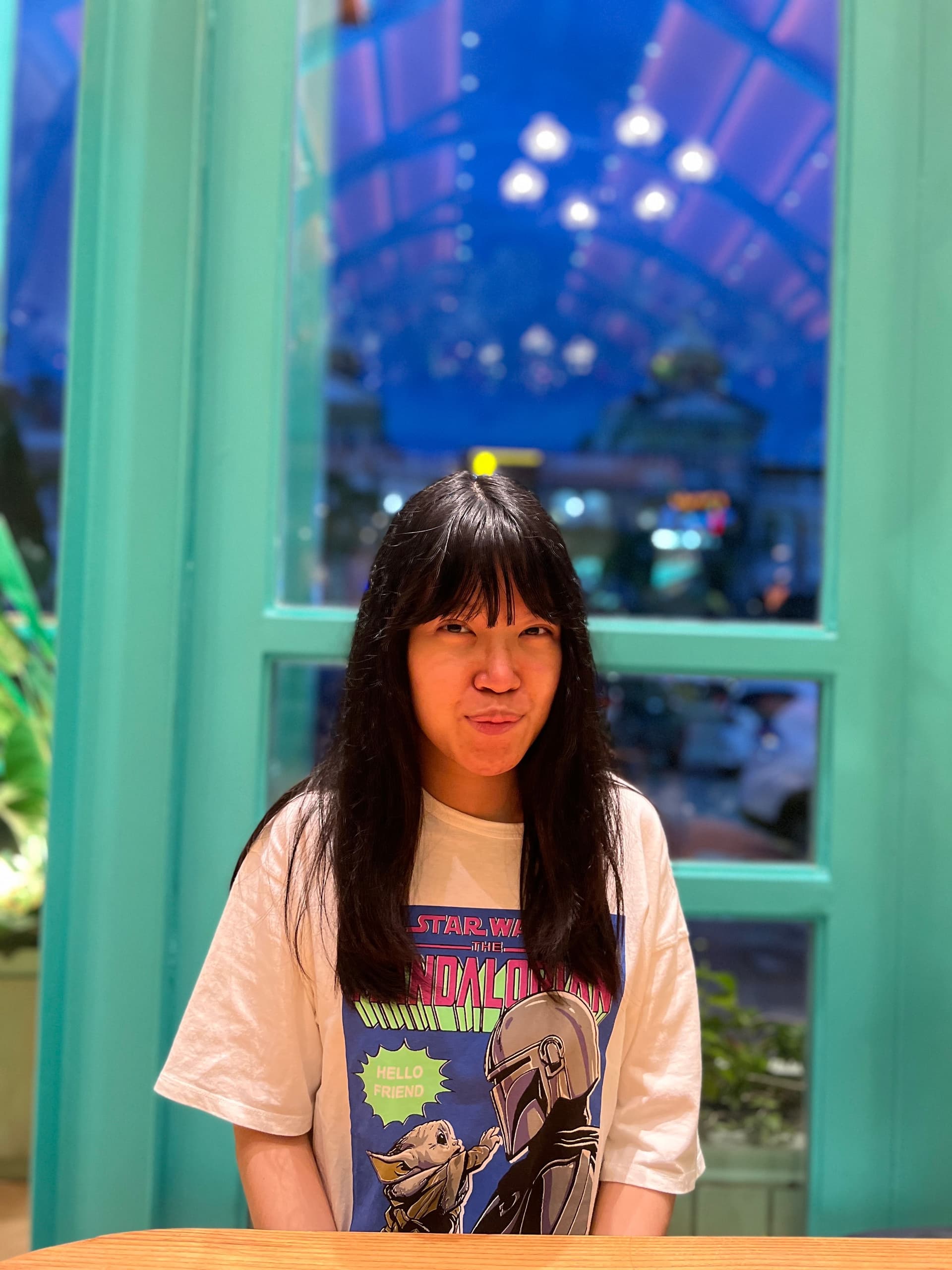
Shrimp fry and waste treatment are two crucial aspects that determine the success of shrimp cultivations. To help farmers understand the importance of both aspects, on May 13 2023, JALA and Forum Informasi Budidaya collaborated to host another online SHRIMPS TALK webinar series.
This time, SHRIMPS TALK discussed 2 insightful topics: Shrimp Fry Management - The Key to a Successful Shrimp Cultivation by Edi Sofyan, A.Pi, a shrimp fry practitioner, and Practical Solutions of Wastewater Treatment Application for a Sustainable Shrimp Cultivation by Dany Yukasano, the national technical manager of Grobes. 135 attendees joined this webinar.
Shrimp Disease and How to Handle Them with Dr. Ir. Hasanuddin Atjo, MP, Head of SCI Makassar, and Practical Management of Diseases in Shrimp Cultivation with Supito, S.Pi., M.Si., Head of BBPBAP 2020. This webinar had 273 attendees.
Shrimp Fry Management - The Key to a Successful Shrimp Cultivation
For the first material, Edi Sofyan explained that one of the parameters of success in shrimp cultivation is producing high quality shrimp fry that positively contributes to the growth of shrimp in the farm. To successfully produce shrimp fry, hatchery facilities as well as production operational facilities (shrimp fry health lab, water quality lab) are required.
The first step of producing high quality shrimp fry is proper processing of seawater, which includes filtration and disinfection to remove dirt, unwanted materials, and pathogens. Next, broodstock is selected to ensure standardized shrimp fry quality. After predicting the target fry amount and calculating the broodstock, the broodstock is quarantined, ablated, and matured in a controlled environment in the hatchery.

After the broodstock produces nauplii (the first stage of shrimp larvae after the egg hatches), stocking is done based on the agreed density per liter to be cultivated. The stock is then cultured for 17 days, after which its health and quality is monitored through laboratory tests and visual observation. High quality fry is responsive towards the light. After ensuring that the resulting fry is good in quality, the fry undergoes acclimatization to ensure it can adapt to the new environment in the pond.
The fry that has passed quality control can now be delivered to farmers, ensuring that parameters such as length (minimum of 7.4 mm) and size variation are fulfilled, as well as being free from parasites, formaldehyde, and viruses. High quality fry helps farmers be more confident to reach their productivity targets.
Practical Solutions of Wastewater Treatment Application for a Sustainable Shrimp Cultivation
Every farmer hopes that their farm can be both productive and profitable. However, Dany highlighted that farmers cannot neglect the importance of sustainability in reaching their goals. A sustainable cultivation should make use of the available resources while conserving the environment around it.
 One of the factors that hinder sustainable cultivation is the waste produced from shrimp cultivations. Shrimp cultivation waste is high in Biological Oxygen Demand (BOD), Total Suspended Solid (TSS), and organic matter. Without proper management, the disposal of waste causes shoaling in coastal areas, increased shrimp disease spread, and more environmental problems.
One of the factors that hinder sustainable cultivation is the waste produced from shrimp cultivations. Shrimp cultivation waste is high in Biological Oxygen Demand (BOD), Total Suspended Solid (TSS), and organic matter. Without proper management, the disposal of waste causes shoaling in coastal areas, increased shrimp disease spread, and more environmental problems.
Therefore, installations of wastewater treatment plants are required to treat shrimp cultivation waste. The minimum ratio of such installations compared to cultivation ponds is 20%, and comprises of:
- Sediment pond: to filter total suspended solids from wastewater
- Aeration pond: to dissolve oxygen into the water and increase DO
- Fish or macro algae pond: to act as a biofilter and bioindicator, reducing TSS, nitrites, nitrates, and phosphates
Moreover, some tips for farmers to remember in constructing treatment plants are ensuring that the sediment pond has meanders to install filters with a current of less than 20 m/s. Next, the sediments should be removed regularly before the thickness reaches 50% of the total depth.
For aeration ponds, root blowers are needed to distribute aeration to the bottom of the pond. Farmers should also place tilapia or milkfish and water plants in the fish or macro algae ponds, and the water should remain inside for a minimum of 6 hours. Chemical use is not recommended to prevent further environmental damage. After treatment, the water quality should be reassessed and if it has not fulfilled the requirements, then the water should be re-treated.
The audiences were eager to learn about these new insights. They also addressed their questions about cultivation, shrimp fry, and waste treatment. JALA hopes that the presentations can help shrimp farmers to have a better understanding of shrimp fry and waste management.
If you are involved in the shrimp cultivation industry and want to improve your farm productivity with the latest information and insights, follow JALA’s Instagram at @jalaindonesia so you don’t miss the next SHRIMPS TALK and other upcoming events. See you in the next SHRIMPS TALK!





